Smartwatch Sensors: The Most In-Depth Guide!
Are you curious about the sensors in your smartwatch?
Smartwatches are becoming increasingly popular due to their convenience and functionality.
They are packed with sensors that enable them to track a variety of metrics, from heart rate to sleep quality.
Key Takeaways:
- Smartwatch sensors come in many different forms, each with its own unique purpose.
- For example, accelerometers are used to track movement and physical activity, while heart rate monitors can provide insights into your cardiovascular health.
- Additionally, many smartwatches now come equipped with sensors that can monitor blood oxygen levels, body temperature, and even electrocardiogram (ECG) readings.
Bear with me as I explain each and every sensor being used in smartwatches.

Types of Smartwatch Sensors
Here are a few types of sensors commonly found in smartwatches.
1. Accelerometer

An accelerometer is a sensor that measures the acceleration of the watch. It can detect whether the watch is moving, and how fast it is moving.
The primary function of the accelerometer in a smartwatch is to track your steps and monitor your physical activity.
It detects even subtle movements, such as the swinging of your arms while walking or running.
By accurately measuring these movements, the accelerometer can estimate the number of steps you have taken throughout the day.
Additionally, the accelerometer sensor enables the smartwatch to calculate the distance you have covered during your activities.
It does this by analyzing the acceleration data in relation to time and using specific algorithms to convert it into a distance measurement.
This feature is particularly useful for tracking your running or walking workouts, allowing you to keep tabs on your progress and set goals.
Moreover, the accelerometer helps in estimating the number of calories burned during your physical activities.
2. Heart Rate Sensor

The heart rate sensor is used to measure your heart rate. It uses light to detect the blood flow in your wrist, which is then used to calculate your heart rate.
The heart rate sensor in a smartwatch typically employs photoplethysmography (PPG) technology.
PPG works by emitting light into your skin and then measuring the amount of light that is reflected back.
The sensor analyzes the variations in the reflected light caused by the pulsating blood vessels in your wrist.
Measuring your heart rate is not only beneficial for fitness enthusiasts but also for anyone interested in monitoring their overall health.
During workouts, the heart rate sensor provides real-time feedback on your heart rate, allowing you to gauge the intensity of your exercises.
By tracking your heart rate zones, you can optimize your training and ensure that you are working out at the desired level of intensity.
Furthermore, the heart rate sensor is useful for assessing your heart health.
It can provide insights into your resting heart rate, which is the number of times your heart beats per minute while at rest.
By monitoring changes in your resting heart rate over time, you can get an indication of your cardiovascular fitness and overall well-being.
In addition to workout intensity and heart health monitoring, the heart rate sensor in a smartwatch can be used for other features.
It may enable functions like stress tracking, sleep analysis, and providing alerts when your heart rate goes beyond certain thresholds.
These features can contribute to a more comprehensive understanding of your body’s responses and help you make informed decisions about your health and well-being.
3. SpO2 Sensor

The SpO2 sensor, also known as a blood oxygen sensor or pulse oximeter, is the most common sensor found in smartwatches. Its primary function is to measure the oxygen saturation level in your blood.
This measurement indicates the percentage of hemoglobin in your blood that is carrying oxygen.
The SpO2 sensor in a smartwatch utilizes light-emitting diodes (LEDs) and photodiodes to estimate the oxygen saturation level.
The sensor emits specific wavelengths of light that can penetrate the skin and blood vessels in your wrist.
By analyzing the light absorption patterns, the sensor can determine the amount of oxygen in your blood.
Monitoring blood oxygen saturation is crucial for assessing your respiratory health.
It can provide insights into how well your body is oxygenating and delivering oxygen to various organs and tissues.
Changes in blood oxygen levels may indicate potential respiratory issues or other health conditions that warrant further attention.
By using the SpO2 sensor in a smartwatch, you can conveniently track your blood oxygen saturation levels in real-time.
However, most budget smartwatches do not offer real-time SpO2 monitoring, but many do.
Regular monitoring can help you understand how your body responds to different activities and environments.
For example, you can assess the impact of physical exercise, changes in altitude, or even sleep apnea on your blood oxygen levels.
Furthermore, the SpO2 sensor can be beneficial for individuals with respiratory conditions such as asthma or chronic obstructive pulmonary disease (COPD).
It allows them to monitor their blood oxygen levels and detect any fluctuations or abnormalities that may require medical intervention.
4. Pedometer

The pedometer is a sensor that counts your steps. It is used to track your physical activity and estimate the distance you have covered.
The pedometer sensor works by detecting and measuring the motion associated with each step you take.
It utilizes an accelerometer or a combination of sensors to accurately capture the movement of your body.
With every step, the sensor detects the impact or acceleration generated and translates it into a step count.
By accurately counting your steps, the pedometer sensor allows you to monitor your physical activity levels throughout the day.
It can provide you with information on the total number of steps you have taken, which serves as an indicator of your overall activity level.
This feature is particularly useful for individuals aiming to increase their daily physical activity or achieve specific fitness goals.
Moreover, the pedometer sensor can estimate the distance you have covered during your activities.
Using algorithms and data collected from the sensor, it converts the step count into an approximation of the distance traveled.
This information can be valuable for tracking your running or walking workouts, helping you keep track of your progress and set distance-based goals.
In addition to step counting and distance tracking, some pedometer sensors also provide additional features such as calorie estimation.
By combining step count data with other factors like your weight, height, and age, the sensor can estimate the number of calories you have burned during your physical activities.
This feature can be helpful for individuals focused on weight management or maintaining a healthy lifestyle.
5. Gyroscope
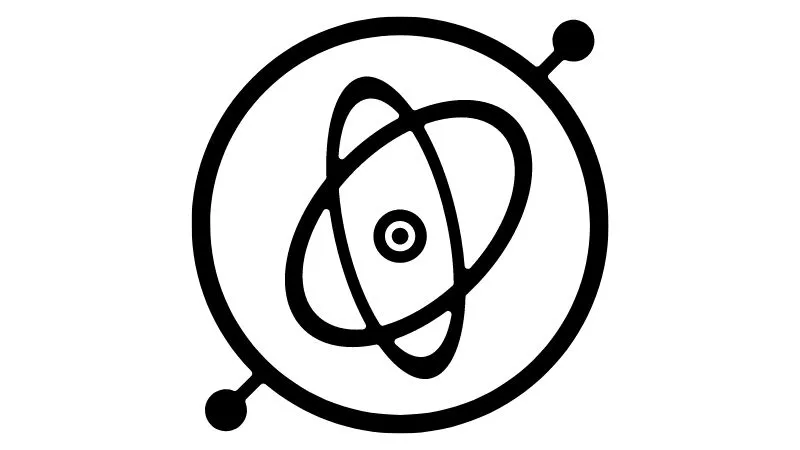
The gyroscope is a sensor that measures the rotation of the watch. It is used to detect the orientation of the watch and to track your movements.
The gyroscope sensor works based on the principles of angular momentum and the Coriolis effect.
It consists of a tiny, highly sensitive mechanical structure that can rotate around multiple axes.
When the watch undergoes rotational motion, the gyroscope detects the changes in angular velocity and provides precise measurements of the rotation.
By accurately measuring the rotation of the watch, the gyroscope sensor enables the smartwatch to determine its orientation in three-dimensional space.
It can detect movements such as tilting, twisting, or turning of the watch in different directions.
This information is essential for various functionalities and applications in the smartwatch.
One of the primary uses of the gyroscope sensor is in gesture recognition.
It allows the smartwatch to recognize specific hand movements or gestures made by the user.
For example, you can raise your wrist to wake the watch, shake it to dismiss notifications, or perform certain predefined gestures to interact with the smartwatch’s interface.
The gyroscope sensor is also vital for activity tracking and fitness applications.
It enables the smartwatch to accurately track your movements and exercises, such as running, cycling, or swimming.
By combining data from the gyroscope with other sensors like the accelerometer and heart rate monitor, the smartwatch can provide comprehensive insights into your workout intensity, distance covered, and calories burned.
6. GPS

The GPS sensor is used to track your location. It uses satellites to determine your exact location and can be used to track your outdoor activities.
The GPS sensor works by receiving signals from multiple satellites orbiting the Earth.
By analyzing the time it takes for the signals to reach the smartwatch from different satellites, the sensor can calculate the distance between the satellites and the watch.
This information, combined with the precise orbital data of the satellites, allows the smartwatch to triangulate its position on the Earth’s surface.
With the GPS sensor in a smartwatch, you can easily track your outdoor activities such as running, hiking, cycling, or even walking.
By accurately determining your location, the sensor provides essential data such as distance covered, pace, and route information.
This information is invaluable for monitoring your progress, setting goals, and analyzing your performance during workouts or outdoor adventures.
Furthermore, the GPS sensor allows you to view your tracked routes on maps or share them with others.
You can see your starting point, endpoints, and the path you followed during your activity.
This feature not only adds a level of engagement and motivation but also provides a visual representation of your outdoor journeys.
The GPS sensor is particularly useful when exploring unfamiliar areas or when you need directions.
It can provide turn-by-turn navigation instructions, guiding you along your chosen route and helping you reach your destination safely and efficiently.
Additionally, the sensor enables location-based services like finding nearby points of interest, restaurants, or landmarks.
It’s worth noting that the use of the GPS sensor can impact the smartwatch’s battery life, as it requires constant communication with satellites.
However, many GPS smartwatches offer power-saving modes or the option to selectively enable GPS for specific activities to mitigate battery drain.
7. Ambient Light Sensor
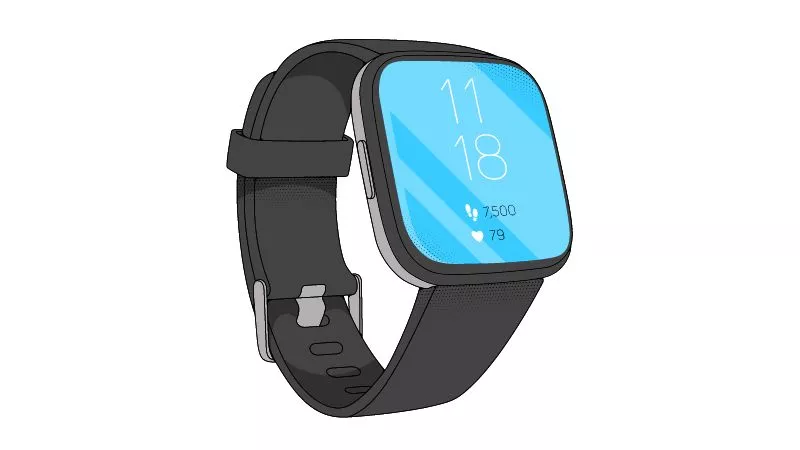
The ambient light sensor is used to adjust the brightness of the watch display.
It works like a smart eye, constantly assessing the amount of light in your environment and automatically adjusting the display brightness accordingly for a comfortable viewing experience.
The ambient light sensor is like a watch’s own mini-light detective.
It measures the intensity of light around you, whether you’re outdoors under the sun’s bright rays or indoors in a dimly lit room.
By gauging the ambient light levels, the sensor ensures that your smartwatch’s display brightness adapts to provide optimal visibility.
Think of it as a dynamic brightness assistant for your watch.
On a sunny day, when the surroundings are flooded with bright light, the sensor detects this and automatically boosts the display brightness.
This way, you won’t struggle to read your watch’s screen or strain your eyes trying to decipher the information.
Conversely, when you step into a dimly lit room or encounter low light conditions, the ambient light sensor comes to the rescue once again.
It detects the reduced light levels and lowers the display brightness to a comfortable and energy-efficient level.
This not only saves battery power but also prevents your watch’s bright display from dazzling you or disturbing others around you.
The ambient light sensor’s ability to adjust the display brightness in real-time ensures that your smartwatch’s screen is easy to read and provides an optimal viewing experience in any lighting environment.
By automatically fine-tuning the display brightness, the ambient light sensor also contributes to extending your smartwatch’s battery life.
Since the brightness adjusts according to the ambient lighting conditions, excessive power consumption is minimized, helping you enjoy longer usage times without worrying about frequent recharging.
8. Barometer

The barometer is used to measure the air pressure.
It provides valuable information about the pressure exerted by the Earth’s atmosphere at a specific location.
The data collected by the barometer sensor can be used to predict changes in weather conditions and estimate your altitude.
By monitoring the air pressure, the barometer sensor helps you stay ahead of the weather.
It can detect subtle changes in atmospheric pressure, which often indicate shifts in weather patterns.
For example, a significant drop in air pressure may suggest an approaching storm, while a steady rise could indicate fair weather.
This feature is particularly useful for outdoor enthusiasts, hikers, and anyone planning activities that are sensitive to weather conditions.
The barometer sensor can also assist in estimating your altitude or elevation.
Air pressure decreases as you ascend to higher altitudes due to the thinner atmosphere.
By comparing the current atmospheric pressure to the standard pressure at sea level, the sensor can provide an approximation of your altitude.
This information is beneficial for activities like hiking, mountaineering, or simply exploring unfamiliar terrain.
Furthermore, the barometer sensor can enhance the accuracy of other features in your smartwatch.
For example, it can contribute to more precise tracking of your workouts, particularly those involving changes in altitude such as hiking uphill or climbing stairs.
The sensor helps the smartwatch account for changes in air pressure and adjust calculations accordingly, providing more accurate data on your performance.
It’s worth noting that barometric pressure can be influenced by factors other than altitude and weather changes, such as air temperature and local environmental conditions.
Therefore, the barometer sensor is typically used in conjunction with other sensors and data sources to provide a comprehensive understanding of your surroundings and activities.
9. Thermometer
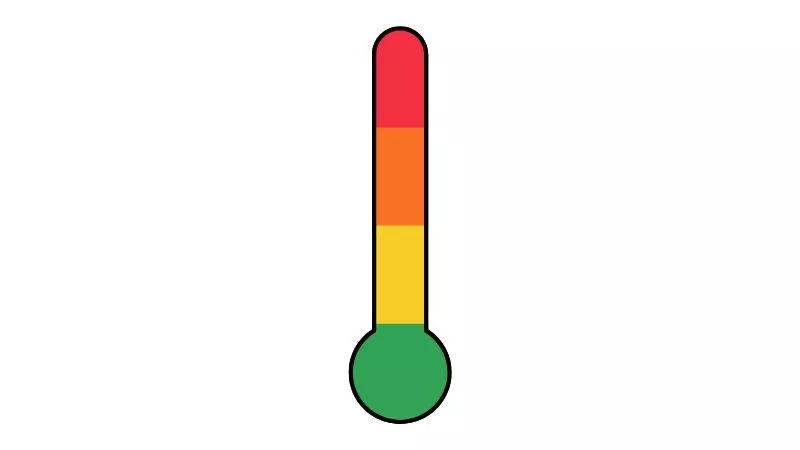
The thermometer is used to measure the temperature. It can be used to monitor your body temperature and to estimate the temperature of your environment.
When it comes to body temperature monitoring, the thermometer sensor in a smartwatch can be particularly handy.
It enables you to keep track of your temperature changes, which can be an essential indicator of your overall health and well-being.
By regularly monitoring your body temperature, you can quickly detect any potential fever or abnormal temperature patterns that may require medical attention.
Additionally, the thermometer sensor can estimate the temperature of your immediate environment.
It measures the ambient temperature, providing you with information about the temperature conditions around you.
This can be particularly useful for planning outdoor activities, determining the appropriate clothing layers, or assessing whether the environment is too hot or cold for comfort.
By combining body temperature monitoring with environmental temperature measurement, the thermometer sensor in a smartwatch offers a comprehensive view of the temperature dynamics in your daily life.
This information can help you make informed decisions regarding your comfort, health, and activity choices.
It’s worth noting that while the thermometer sensor in a smartwatch can provide useful insights, its accuracy and precision may vary.
Factors such as the placement of the sensor, the watch’s contact with the skin, and environmental influences can affect the readings.
Therefore, it’s always advisable to use the thermometer sensor as a general indicator and consult a medical professional for precise and reliable temperature measurements.
10. Magnetometer or Geomagnetic Sensor
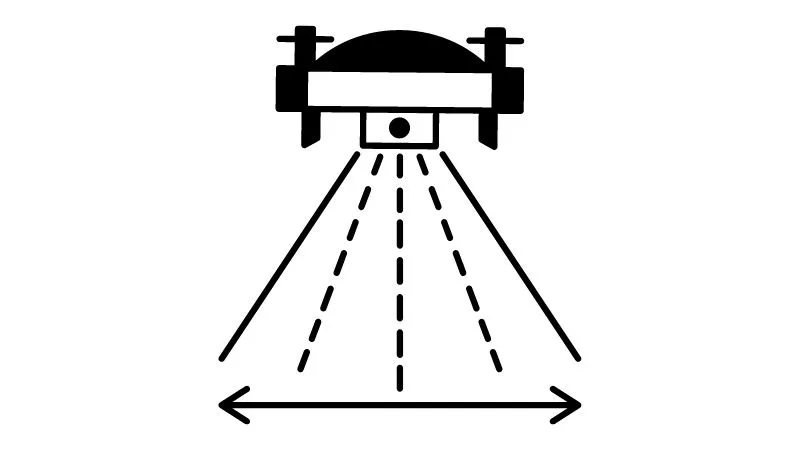
The magnetometer or geomagnetic sensor is used to detect the magnetic field of the earth. It can be used to determine your orientation and to provide compass directions.
The magnetometer sensor works by measuring the strength and direction of the Earth’s magnetic field.
It can sense even subtle changes in the magnetic field, allowing the smartwatch to determine which way is north, south, east, and west.
By using this information, the sensor can provide compass functionality, helping you navigate and orient yourself in your surroundings.
When you activate the compass feature on your smartwatch, the magnetometer sensor acts like a digital compass.
It can provide real-time updates on your heading and display accurate compass directions on the watch’s screen.
This is especially useful when exploring unfamiliar areas, hiking in the wilderness, or simply finding your way around a new city.
The magnetometer sensor’s ability to detect the Earth’s magnetic field also contributes to other functionalities in your smartwatch.
For instance, it can enhance the accuracy of mapping applications by aligning your orientation with map data, ensuring that the displayed directions are in sync with your physical movements.
In addition to navigation and mapping, the magnetometer sensor can be utilized in various augmented reality (AR) applications.
By combining the magnetic field information with other sensors like the gyroscope and accelerometer, the smartwatch can provide immersive AR experiences.
This may include overlaying digital objects or information onto the real-world view seen through the watch’s display.
It’s worth noting that the magnetometer sensor may be affected by nearby magnetic sources, such as metallic objects or electronic devices.
Therefore, it’s important to calibrate the sensor periodically to ensure accurate readings and reliable compass directions.
11. Altimeter

The altimeter is used to measure your altitude. It can be used to track your elevation gain during your outdoor activities.
The altimeter sensor is a valuable feature found in many smartwatches that measures altitude or elevation.
It enables you to track changes in your vertical position during outdoor activities, providing you with valuable information about your altitude gain or loss.
The altimeter sensor works by detecting changes in air pressure.
As you move to higher or lower altitudes, the atmospheric pressure changes accordingly.
The altimeter sensor uses these pressure variations to estimate your current elevation above sea level.
When engaged, the altimeter sensor in a smartwatch continuously monitors the atmospheric pressure and translates it into altitude readings.
It keeps track of your vertical movement, allowing you to gauge the amount of ascent or descent during your outdoor activities such as hiking, climbing, or skiing.
By tracking your altitude gain, the altimeter sensor provides you with a comprehensive view of your performance and progress.
You can measure the total elevation climbed during a hiking trail, the height gained during a mountain ascent, or the vertical drop conquered on a ski slope.
This information is especially useful for setting goals, assessing your fitness level, and comparing your achievements over time.
Furthermore, the altimeter sensor contributes to the accuracy of other features and applications in your smartwatch.
For instance, it enhances the precision of GPS tracking by incorporating altitude data.
The combination of GPS and altimeter readings ensures more accurate calculations of distance traveled, pace, and other performance metrics, especially in hilly or mountainous terrain.
It’s important to note that the altimeter sensor relies on changes in atmospheric pressure to estimate altitude.
Therefore, it’s sensitive to weather conditions and may require occasional calibration to account for fluctuations in barometric pressure.
Additionally, variations in temperature can affect pressure readings, so it’s advisable to keep the watch protected from extreme temperature changes for optimal accuracy.
12. Bioimpedance Sensor
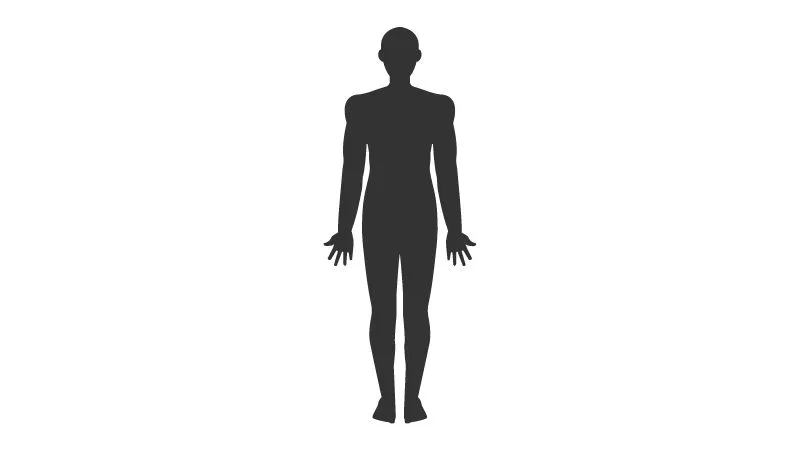
The bioimpedance sensor is used to measure your body composition. It utilizes a technique called bioelectrical impedance analysis (BIA) to estimate various parameters such as body fat percentage and hydration level.
The bioimpedance sensor works by sending a weak electrical current through your body and measuring the resistance encountered.
Different tissues in your body, such as muscle, fat, and water, have varying levels of electrical conductivity, and this forms the basis of the measurement.
By analyzing the impedance data, the sensor can estimate your body fat percentage.
Since fat has higher resistance compared to muscle and water, the sensor can calculate the proportion of fat in your body composition.
This information is valuable for those interested in tracking their body fat levels, managing weight, and assessing overall fitness.
Additionally, the bioimpedance sensor can help monitor your hydration level.
Water is a good conductor of electricity, and changes in hydration can be reflected in the impedance readings.
By comparing the measured impedance to established models and algorithms, the sensor can provide an estimate of your hydration status.
This information is particularly useful for athletes, individuals with specific hydration needs, or those looking to maintain optimal hydration levels.
It’s important to note that while the bioimpedance sensor can provide estimations of body composition, its accuracy may vary depending on several factors.
Variables such as skin temperature, hydration level, body position, and the distribution of fat and muscle can influence the readings.
Therefore, it’s advisable to interpret the data as an estimation and not solely rely on it for medical or precise measurements.
13. Proximity Sensor

The proximity sensor is used to detect objects near the watch. It can be used to turn off the display when the watch is not in use.
It plays a significant role in conserving battery life and providing a seamless user experience by automatically controlling the display based on proximity.
The proximity sensor works by emitting a signal, typically an infrared light or electromagnetic field, and measuring the reflection or changes in the signal when an object comes close to the watch.
By analyzing these reflections or changes, the sensor determines if there is an object nearby.
One of the primary purposes of the proximity sensor in a smartwatch is to automatically turn off the display when it’s not in use.
When you’re not actively looking at the watch or have it positioned away from your wrist, the proximity sensor detects the absence of nearby objects and triggers the display to switch off.
This feature helps conserve battery power by preventing unnecessary display activation and extending the overall battery life of the smartwatch.
In addition to power-saving benefits, the proximity sensor contributes to a seamless user experience.
When you raise your wrist to check the time or view notifications, the sensor detects the presence of your hand or wrist, and the display turns on automatically, providing you with instant access to the information you need.
This feature eliminates the need to manually activate the display, making interactions with the smartwatch more convenient and intuitive.
The proximity sensor also plays a role in preventing accidental touch inputs.
When the sensor detects an object or surface in close proximity, such as when the watch is placed on a table or in a bag, it can temporarily disable touch functionality or adjust the sensitivity to prevent unintended interactions.
This helps avoid accidental inputs, such as unintentionally dismissing notifications or triggering actions, while the watch is not actively being worn on the wrist.
14. ECG Sensor
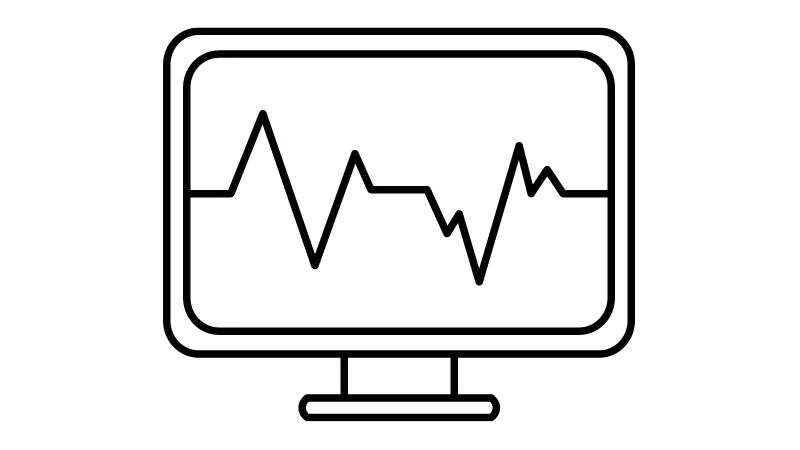
The ECG (Electrocardiogram) sensor is used to measure your heart’s electrical activity. It can be used to detect irregular heart rhythms and to monitor your heart health.
The ECG sensor works by recording the electrical signals produced by your heart as it beats.
These signals are captured through special electrodes or sensors on the smartwatch’s surface, typically located on the back of the watch.
When you place your finger or touch the designated area, the ECG sensor detects and analyzes the electrical activity.
By analyzing the electrical patterns, the ECG sensor can identify irregularities in your heart’s rhythm, such as atrial fibrillation (AFib) or other arrhythmias.
AFib is a common heart condition characterized by an irregular and often rapid heartbeat.
Detecting such irregular rhythms is crucial as they may be indicators of underlying heart conditions that require medical attention.
In addition to detecting irregular heart rhythms, the ECG sensor can also provide valuable insights into your heart health.
It can measure parameters like heart rate variability (HRV), which is the variation in the time interval between heartbeats.
HRV is considered an indicator of the autonomic nervous system’s function and can provide information about stress levels, overall fitness, and recovery.
It’s important to note that the ECG sensor in smartwatches is not a substitute for professional medical devices or diagnosis.
However, it can serve as an early warning system, alerting you to potential heart irregularities and prompting you to seek further medical evaluation.
Sharing the recorded ECG data with your healthcare provider can facilitate more accurate diagnosis and treatment decisions.
Furthermore, the ECG sensor empowers individuals to take an active role in monitoring their heart health.
Regularly recording ECG readings and tracking changes over time can help you understand your heart’s behavior and make informed decisions regarding your lifestyle, exercise, and overall well-being.
15. Gesture Sensor

The gesture sensor is used to detect your hand movements. It can be used to control your watch without touching it.
The gesture sensor utilizes various technologies, such as infrared sensors, cameras, or motion sensors, to capture and analyze the movements of your hands.
It can recognize gestures such as swipes, taps, twists, or flicks, translating them into specific commands or actions on the smartwatch.
One of the primary applications of the gesture sensor is in touchless control of the smartwatch.
Instead of relying solely on physical buttons or touchscreens, you can interact with the watch by simply waving, rotating your hand, or making specific gestures.
This feature is particularly useful when your hands are occupied or when you want to minimize direct contact with the watch’s surface.
With the gesture sensor, you can navigate through menus, scroll through notifications, or switch between apps by performing predefined hand gestures.
For example, a wrist flick might take you to the next notification, a hand wave could dismiss an incoming call, or a circular motion might scroll through a list.
These gestures provide a hands-free and intuitive way to interact with the smartwatch, enhancing convenience and ease of use.
Furthermore, the gesture sensor can offer additional functionalities beyond basic control.
Some smartwatches utilize advanced gesture recognition algorithms to detect more complex hand movements, allowing for gesture-based shortcuts or customized gestures for specific actions.
For instance, drawing a letter “C” in the air could trigger the camera app, or a double tap gesture might activate a voice assistant.
It’s important to note that the effectiveness and range of gesture detection can vary depending on the specific smartwatch and its sensor technology.
Factors such as lighting conditions, distance, and the complexity of gestures may impact the accuracy and responsiveness of the sensor.
Therefore, it’s advisable to familiarize yourself with the supported gestures and their optimal usage conditions for the best experience.
16. UV Sensor
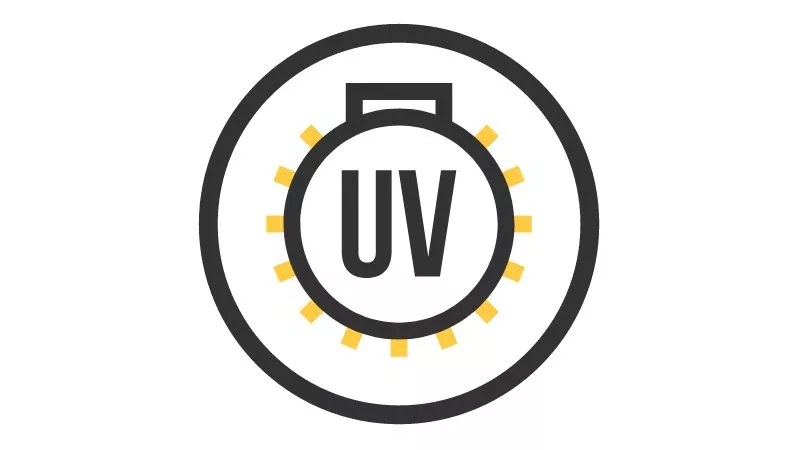
The UV (Ultraviolet) sensor is used to measure the UV radiation in the environment. It can be used to monitor your sun exposure and to protect your skin from harmful UV rays.
The UV sensor utilizes specialized components, such as UV photodiodes or UV sensors, to detect and measure the intensity of UV radiation.
These sensors are typically integrated into the smartwatch’s design and positioned to capture the ambient UV light.
By accurately measuring UV radiation, the sensor provides you with real-time information about the intensity of UV rays in your surroundings.
It helps you make informed decisions about sun protection and manage your exposure to minimize the risk of sunburn, skin damage, and long-term health consequences associated with excessive UV exposure, such as premature aging and increased risk of skin cancer.
Based on the UV level readings, the smartwatch can provide personalized recommendations and alerts to help you take appropriate sun protection measures.
For example, it can notify you when the UV index reaches high levels, reminding you to apply sunscreen, seek shade, or wear protective clothing and accessories.
Some smartwatches with UV sensors also offer features like UV history tracking, which allows you to monitor your cumulative sun exposure over time.
By keeping track of your UV exposure, you can better understand your habits and adjust your behaviors to maintain healthier sun practices.
It’s important to note that while the UV sensor provides valuable information, it’s not a substitute for standard sun protection practices.
17. EDA Sensor

The EDA sensor, also known as the skin conductance or galvanic skin response sensor, is used to measure your skin’s electrical conductivity. It can be used to monitor your stress level and to provide relaxation exercises.
The EDA sensor works by detecting the changes in the electrical conductance of your skin.
When you experience emotional or psychological arousal, such as stress, excitement, or anxiety, your body’s sympathetic nervous system responds by increasing sweat gland activity.
This, in turn, affects the skin’s electrical conductivity.
The EDA sensor in a smartwatch uses small electrodes or sensors in contact with your skin to measure the subtle electrical signals.
By analyzing the variations in these signals, the sensor can provide insights into your stress level or emotional state.
Monitoring your EDA responses can help you become more aware of your body’s stress reactions and facilitate stress management.
By tracking changes in your skin’s electrical conductance, the sensor can provide real-time feedback on your stress levels and alert you to periods of heightened arousal.
Moreover, smartwatches with EDA sensors often offer relaxation exercises or guided breathing exercises to help you manage stress effectively.
These exercises are designed to promote relaxation, calmness, and overall well-being.
By following the prompts and adjusting your breathing patterns, you can engage in mindful practices that help reduce stress and improve your mental and emotional state.
It is crucial to understand that although the EDA sensor can offer valuable insights into your stress levels, it is not a replacement for professional medical advice or diagnosis.
Its purpose is to enhance self-awareness and support stress management techniques.
If you experience persistent or severe stress-related symptoms, it is recommended to seek guidance from healthcare professionals or mental health practitioners.
18. Skin Temperature Sensor
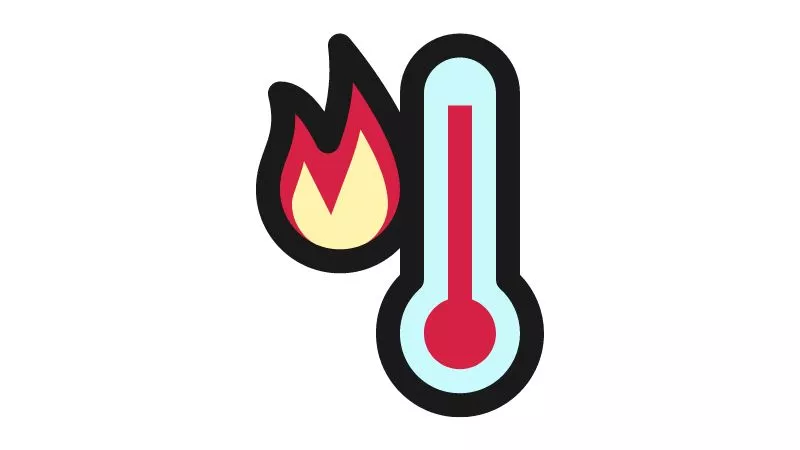
The skin temperature sensor is used to measure your skin’s temperature. It can be used to monitor your body temperature and to estimate your stress level.
The skin temperature sensor utilizes specialized components, such as infrared sensors or thermistors, to capture and measure the temperature of your skin’s surface.
These sensors are typically integrated into the smartwatch’s design and positioned to make contact with your skin.
By accurately measuring the skin temperature, the sensor provides valuable information about your body’s thermal state.
It can help monitor changes in body temperature, identify trends, and alert you to potential fever or overheating.
Monitoring your skin temperature can also offer insights into your stress level.
During periods of increased stress or emotional arousal, the body’s response can lead to changes in skin temperature.
By detecting variations in skin temperature, the sensor can provide indications of stress levels, allowing you to become more aware of your body’s stress response.
Importance of Smartwatch Sensors
Now that you know what sensors are used in smartwatches, it is crucial to understand their importance.
That’s why I am writing this section to emphasize the significance of smartwatch sensors.
1. Fitness Tracking
Smartwatches come equipped with sensors that track your physical activity, such as the number of steps you take, the distance you cover, and the calories you burn.
These sensors include an accelerometer, a gyroscope, and a pedometer.
They work together to provide you with accurate data about your fitness levels, which can help you set and achieve your fitness goals.
2. Health Monitoring
Smartwatches are also equipped with sensors that monitor your health.
These sensors include a heart rate monitor, an oximeter, and a body temperature sensor.
They are designed to help you keep track of your vital signs and detect any abnormalities that may indicate a health problem.
With this information, you can take action to prevent or treat any health issues that may arise.
3. Navigation
Smartwatches also come with sensors that can help you navigate your way around.
These sensors include a GPS, a compass, and an altimeter.
They work together to provide you with accurate location data, which can be useful when you’re exploring new places or trying to find your way back home.
4. Environmental Monitoring
Smartwatches also have sensors to monitor your environment, such as an ambient light sensor, a barometer, and a humidity sensor.
These sensors collaborate to provide you with valuable information about the weather, air quality, and other environmental factors that can impact your health and well-being.
Limitations of Smartwatch Sensors
Smartwatch sensors undoubtedly possess remarkable capabilities, but it is important to acknowledge that they may also have certain limitations.
In this part, I will discuss some of the major limitations of smartwatch sensors.
1. Accuracy
One of the major limitations of smartwatch sensors is their accuracy.
While many sensors can provide accurate readings, they are not always precise.
For example, heart rate monitors can be affected by factors such as skin color, tattoos, and ambient temperature, which can lead to inaccurate readings.
Additionally, sensors such as accelerometers and gyroscopes can produce false positives or negatives, especially during activities that involve sudden movements or changes in direction.
2. Battery Life
Smartwatch sensors require power to function, and this can be a significant issue for some users.
While many modern smartwatches have improved battery life, some sensors can drain the battery faster than others.
For example, GPS sensors and heart rate monitors can consume a lot of power, which can reduce the overall battery life of the device.
That is why it is advisable to activate these sensors only when necessary.
3. Sensitivity to Motion and Positioning
Smartwatch sensors can also be sensitive to motion and positioning, which can affect their accuracy.
For example, accelerometers can be affected by the position of the wrist, and GPS sensors can be affected by obstructions such as buildings or trees.
This can lead to inaccurate readings or data loss, which can be frustrating for users who rely on the data for fitness tracking or other activities.
4. Cost
Finally, the cost of smartwatch sensors can be a limitation for some users.
While many smartwatches are relatively affordable, those with advanced sensors such as ECG or skin temperature sensors can be more expensive.
Additionally, some sensors may require additional apps, which can add to the overall cost of the device.
The Bottom Line
There you have it! Now, you have the most comprehensive information about the sensors used in smartwatches.
Whenever you use your smartwatch to track any activity, you’ll know which sensor is being utilized to measure those metrics.
For more insightful guides about smartwatches, be sure to check out these resources as well.
Frequently Asked Questions
What types of sensors are commonly found in smartwatches?
The primary sensors found in smartwatches are the accelerometer, SpO2 sensor, and pedometer.
Can a smartwatch accurately measure heart rate?
While many smartwatches offer heart rate monitoring, only a select few, such as the Apple Watch, are known for providing accurate results in this regard.
How does a smartwatch’s barometer sensor work?
A smartwatch’s barometer sensor measures changes in air pressure, which can be used to estimate changes in altitude. The sensor works by measuring the pressure of the air around you. As you move to higher or lower altitudes, the air pressure changes, and the barometer sensor can detect these changes.
What is the role of a gyroscope sensor in a smartwatch?
A gyroscope sensor helps to track the orientation and rotation of your smartwatch. This sensor is particularly useful for tracking activities like running and cycling, where it is important to know the position and movement of your wrist.
What is the purpose of a geomagnetic sensor in a smartwatch?
A geomagnetic sensor helps to track the direction and strength of magnetic fields. This sensor is particularly useful for navigation and location-based services, as it can help to determine your orientation and direction of travel.
How do bioimpedance sensors in smartwatches work?
Bioimpedance sensors use small electrical currents to measure the resistance of your skin. This data can be used to estimate your body fat percentage and hydration levels. Some smartwatches use bioimpedance sensors to track your sleep quality as well.